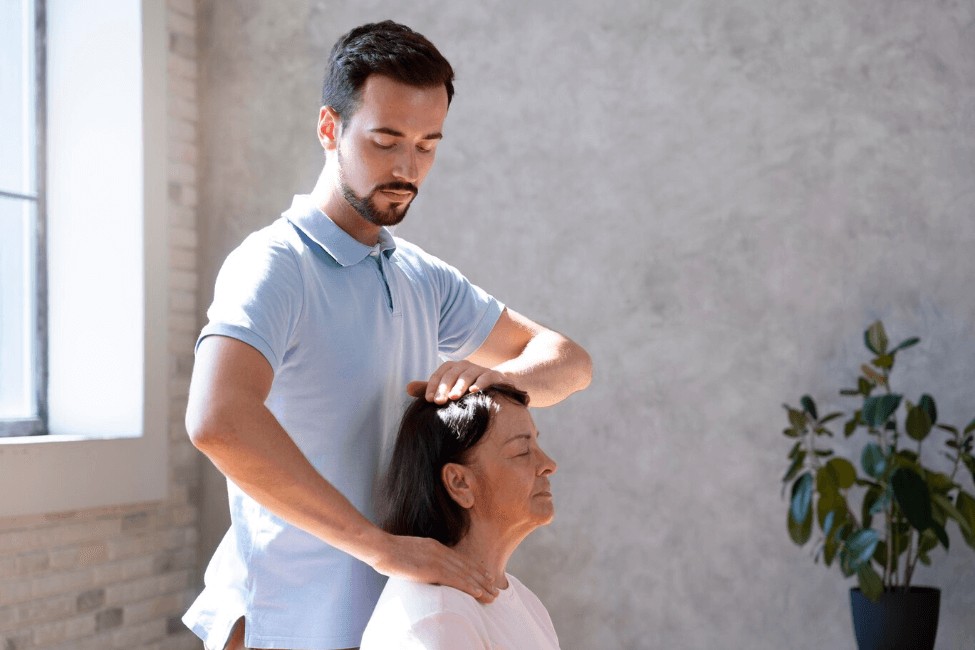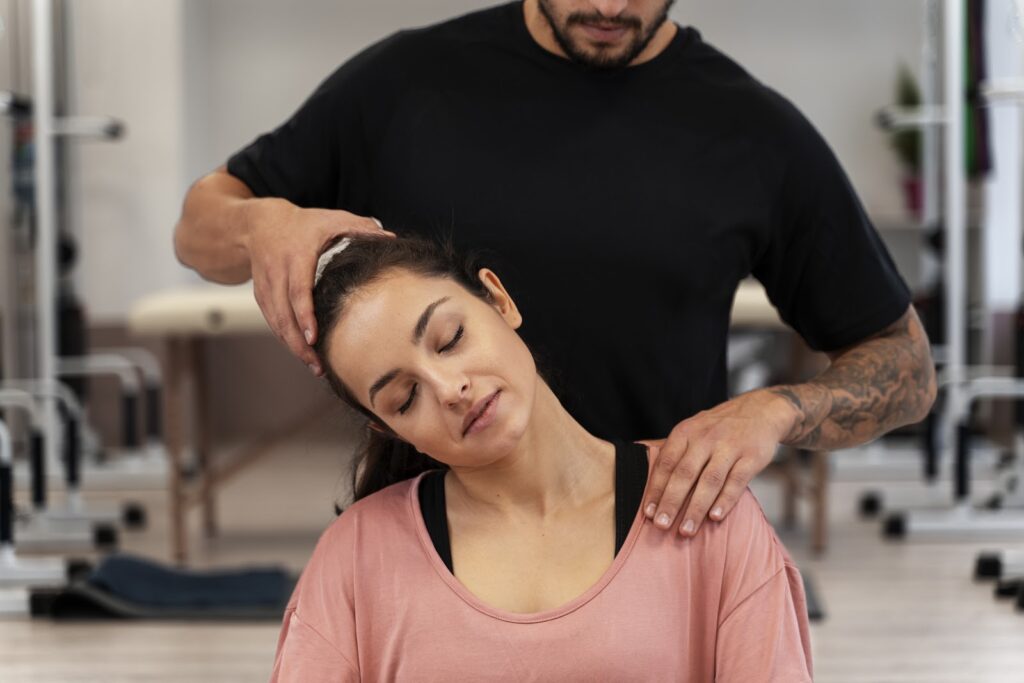In today’s hyper-connected world, the average person spends over seven hours a day on digital devices, leading to a silent but growing epidemic—Forward Head Posture (FHP). Often dubbed “text neck,” FHP is more than a cosmetic issue; it causes real physiological strain on the cervical spine, shoulders, and even the respiratory system.
At VARDĀN, where Functional Manual Therapy® (FMT™) is at the core of personalized physiotherapy, treating forward head posture is approached with a unique blend of manual techniques, neuromuscular training, and postural education. This article explores the anatomy of FHP, its health implications, and how FMT™ can correct and prevent it holistically.

What Is Forward Head Posture?
- Prolonged use of computers, smartphones, and tablets.
- Poor workstation ergonomics
- Sedentary lifestyle
- Weak deep neck flexors and tight chest muscles
- Compensatory posture due to other musculoskeletal dysfunctions
Health Implications of Forward Head Posture
- Neck and Shoulder Pain: Increased load leads to muscle fatigue and trigger points.
- Headaches: Cervicogenic headaches are common due to sustained muscle tension.
- Poor Breathing: Slouched posture restricts diaphragm mobility and lung expansion.
- Nerve Compression: Chronic FHP can contribute to thoracic outlet syndrome or cervical radiculopathy.
- Balance and Gait Impairment: The body compensates for the shifted center of gravity, impacting movement.

Functional Manual Therapy® (FMT™): A Holistic Approach to FHP
How FMT™ Addresses FHP
Releases Soft Tissue Restrictions
Manual techniques such as soft tissue mobilization and myofascial release alleviate tightness in the upper trapezius, sternocleidomastoid, pectorals, and suboccipital muscles—commonly overactive in FHP.
“Manual therapy targeting the anterior cervical muscles improved head posture and neck mobility in just six sessions.”
— Journal of Manual & Manipulative Therapy, 2022
Restores Joint Mobility
Reactivates Deep Neck Flexors
Promotes Efficient Movement Patterns

A Case from VARDĀN: Tech Professional to Pain-Free Living
Ergonomic and Lifestyle Recommendations
- Workstation Setup: Eye-level monitors, lumbar-supported chairs, and standing desks.
- Movement Breaks: Incorporating micro-breaks and desk exercises every 30 minutes
- Breathing Retraining: Diaphragmatic breathing to enhance thoracic mobility.
- Sleep Positioning: Avoiding overly high pillows that exacerbate cervical flexion.
- Balance and Gait Impairment: The body compensates for the shifted center of gravity, impacting movement.




